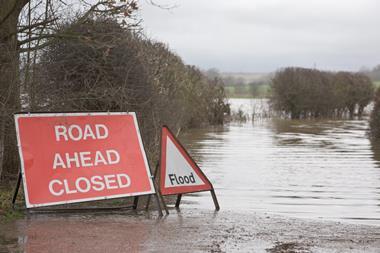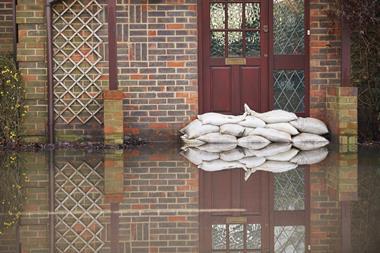Insureds need to prepare for flash flooding as it can be quick and ‘hard to predict’, says risk management director
Preparations for flash flooding are needed as rain is expected to hit the UK following a lengthy spell of extreme hot weather, specialist insurer Ecclesiastical has warned.

Ecclesiastical’s warning follows the Meteorological Office issuing several yellow thunderstorm warnings yesterday (15 August 2022) – highlighting the potential for frequent lightning, large hail and intense rainfall after a record-breaking heatwave.
The insurer is therefore urging its customers to “review the risk of flood to their properties and consider ways to manage the risk should the worst happen”, said the firm’s risk management director Jo Whyman.
Whyman explained that reviewing flood risk is important as “flash flooding can happen miles away from established watercourses and can occur where there is no history of previous flooding problems”.
This uncertainty can therefore make the risk “hard to predict” and “it can happen very quickly”, he added.
Local sewage system pressures
Looking back to July 2021, nearly 76mm of rain fell in 90 minutes in parts of London, affecting an estimated 1,500 properties.
Ecclesiastical dealt with a significant number of claims at this time because of the flood water entering properties – including churches – when local drainage systems were overwhelmed.
Read more: Flood Re reports £46m in GWP for 12 months to March 2022
Explore more insurer-related content here
Whyman continued: “In some cases existing drains haven’t been upgraded or maintained to cope with new building developments, which means that the local sewage system simply can’t deal with the increased volumes of water run-off.
“The current dry ground conditions will add further pressure to drainage systems with lower rates of absorption driving more water into drains.
“Where possible, [customers] should check drainage systems to make sure they are clear of any blockages and consider what flood barriers could be used to prevent water getting into the property.”
Ecclesiastical’s risk management team has developed flood risk guidance that provides advice on the steps customers can take to help manage reduce the risk – including carrying out visual checks of the property, as well as drains and gullies in the land surrounding the buildings.
Hosted by comedian and actor Tom Allen, 34 Gold, 23 Silver and 22 Bronze awards were handed out across an amazing 34 categories recognising brilliance and innovation right across the breadth of UK general insurance.




















































No comments yet